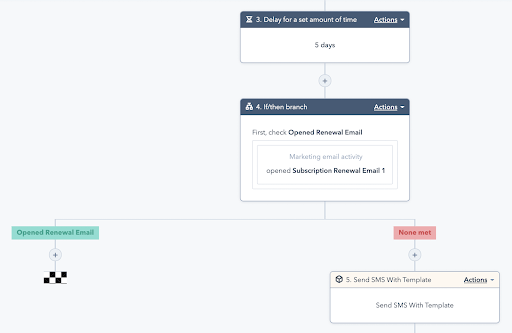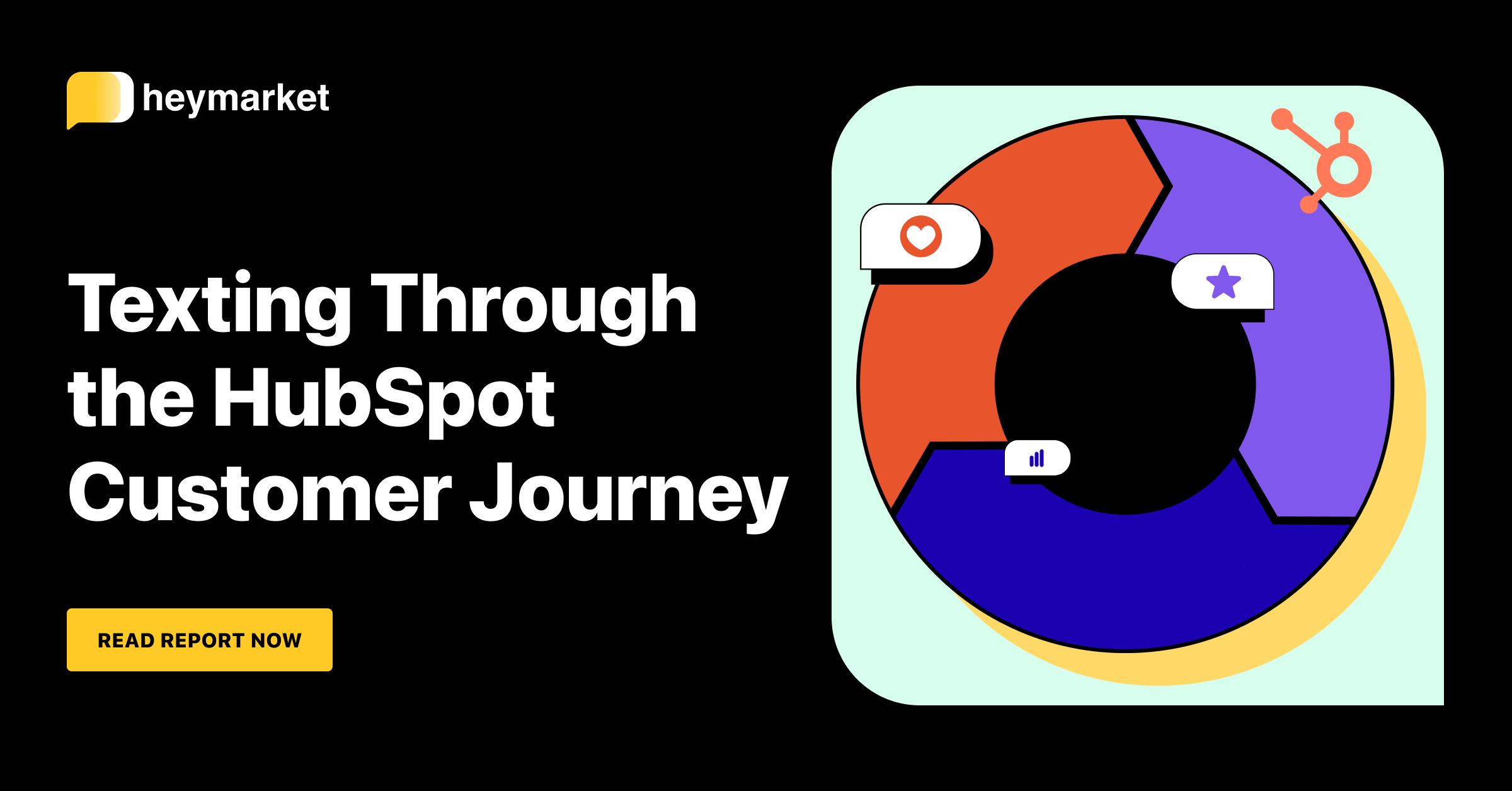4 workflows to build with a HubSpot SMS integration

HubSpot and Heymarket are powerful tools on their own—but did you know they work even better together? A HubSpot SMS integration is all you need to build SMS workflows that save time and resources.
What’s a HubSpot SMS Integration?
SMS integrations empower your business text messaging platform and other web apps to share information and interact with one another.
With a HubSpot SMS integration, your team can sync contacts continually, text contacts right from the HubSpot interface, and use HubSpot CRM custom fields to send personalized texts. Best of all, you can create SMS automations in your Hubspot workflows that streamline your tasks.
In HubSpot, automations are called workflows. In Heymarket, they’re called automations. This blog post will show you five HubSpot workflow examples using Heymarket automations.
Want to learn even more about texting from HubSpot? Check out our guide to texting throughout the HubSpot customer lifecycle.
HubSpot SMS Workflow #1: Send Welcome Texts
Every time you add a new contact to your HubSpot database who opts into your texting services, you should send them a welcome text. This text should greet them and confirm that they meant to opt in.
This is one of the easiest SMS workflows to create in HubSpot. To create a Hubspot SMS opt-in workflow, simply:
- Create one (or more) welcome text SMS templates.
- Create a workflow with a contact enrollment trigger based on the HubSpot properties indicating a contact has become a customer and that they’re opted in to text (e.g., Lifecycle Stage is “customer” and SMS opt-in (custom property) is “yes”).
- Set whichever delay makes sense for you (e.g., delaying the message send time until business hours, Monday-Friday).
- Add an action for “Send SMS With Template” to your HubSpot workflow, and choose your welcome text SMS template.
- Set the action to “send an SMS template.”

Once your new contacts receive their welcome texts, they may reply. That reply will land right in your shared inbox, where you or a team member with appropriate permissions can respond.
Workflow #2: Create SMS Follow-Ups
HubSpot expertly tracks whether contacts have received, opened, or clicked on emails. You can set these events as triggers for workflows that send SMS follow-ups. (Again, you can only send texts to opted-in customers.) This is an effective way to automatically follow up with customers if they haven’t opened an email after a set amount of time.
To set up this SMS workflow, you should:
- Create an SMS follow-up template.
- Create a workflow that includes “Send email” as an action.
- Set a delay (e.g., a few days or a week) to allow customers to open the email.
- Add an if/then branch that checks whether they opened the email.
- For the branch indicating they did not open the email, add an action to “Send SMS With Template” and select your SMS follow-up template.

SMS follow-ups to your emails should attract your customers’ attention, boosting read and reply rates. In fact, texts have eight times the response rate of emails.
SMS Workflow #3: Spark post-event conversations
You can start post-event conversations using Hubspot SMS workflows, too. Checking in with leads and customers after events helps you gauge their interest in your products or services, collect feedback, and answer any additional questions the event might have sparked for them.
- Create an event follow-up SMS template.
- Use HubSpot’s Zoom integration to detect who attended the event.
- Create a workflow centered on the event date. Include a contact enrollment trigger or an if/then branch based on whether customers attended the event.
- Add a delay for a set amount of time after the event (e.g., two hours or one day). Add an action to “Send SMS With Template” and select your event follow-up template.
Following up after an event can engage leads and customers, boosting the event’s impact and starting new customer relationships.
Hubspot workflow example #4: Create personalized outreach for key prospects
You can create HubSpot SMS workflows that enroll contacts based on aspects of their associated deal, such as deal size or type. This is a useful tool for multiple situations, especially for creating personalized outreach campaigns via email and SMS.
To create this cross-platform automation, you can:
- Create an outreach-centric SMS template, including custom fields like first name and company.
- Create a workflow with a contact enrollment trigger based on a contact performing a sales-ready action (e.g., submitting a Request Pricing or Schedule Demo form).
- Add an action to “Send SMS With Template” and select your outreach template.
Personalized outreach is a great way to form closer relationships with key decision-makers and professionals who are connected with large enterprises. With SMS, you’re more likely to reach those prospects—and close deals.
Want more ideas for how to automate your texting workflows in HubSpot? Check out our guide to texting throughout the HubSpot customer lifecycle.





